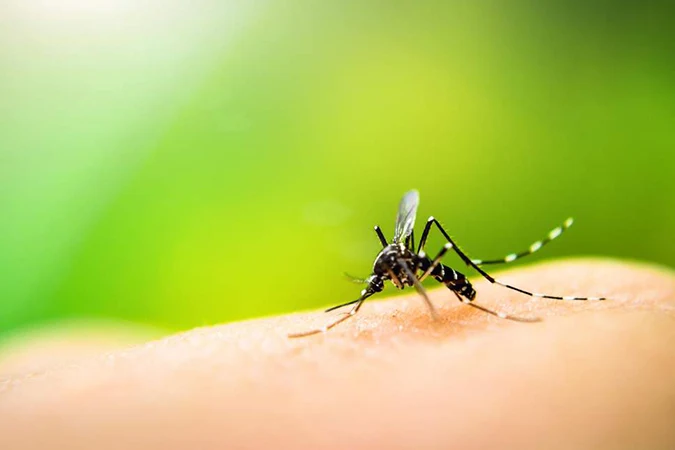Outdoor activities in tropical climates have many challenges and one of the most powerful enemies is the invasion of mosquitoes. Even though wearing short, casual clothes is the best way to avoid getting hot.
Culex, Anopheles, Mansonia and Aedes are four special families and you need to know these very annoying insects! Anti-mosquito cream is the first solution, but sometimes the liquid feels sticky, maybe even irritating your skin.
The simplest way to displace the flock that causes bumps and red on the skin is to pat them to death. The researchers say tapping mosquitoes to death will make them traumatized and reluctant to land on the skin.
Mosquitoes are very smart and they will detect and avoid danger. They will learn quickly that the person is something that should be avoided. Mosquitoes will also be traumatized by body odor and will only return if they forget.
You should also know that mosquitoes prefer to bite men than women and prefer to bite fat people. You should also know that female mosquitoes are very bloodthirsty, while male mosquitoes generally eat flower juice. Here are some other ways to avoid mosquito bites:
Dawn and twilight
Each species has a different culture, but in general mosquitoes are very very active at sunrise and sunset. You must know this before doing outdoor activities that dawn and dusk are critical times for every wild animal. The weather is cool and a little wind is more beneficial for mosquitoes.
Avoid dark colored clothes
Mosquitoes are more interested in dark colors that match the time they are most active at dusk. Wearing brightly colored clothes is one of the best and cheapest ways to avoid mosquito bites.
Fragrances
If you don't like mosquito creams, you can apply lemon oil, cajuput oil and eucalyptus oil to make yourself more fragile where mosquitoes are reluctant to approach. But you must remember that don't use flower-scented perfume, male mosquitoes like flowers.
Culex, Anopheles, Mansonia and Aedes are four special families and you need to know these very annoying insects! Anti-mosquito cream is the first solution, but sometimes the liquid feels sticky, maybe even irritating your skin.
The simplest way to displace the flock that causes bumps and red on the skin is to pat them to death. The researchers say tapping mosquitoes to death will make them traumatized and reluctant to land on the skin.
Mosquitoes are very smart and they will detect and avoid danger. They will learn quickly that the person is something that should be avoided. Mosquitoes will also be traumatized by body odor and will only return if they forget.
You should also know that mosquitoes prefer to bite men than women and prefer to bite fat people. You should also know that female mosquitoes are very bloodthirsty, while male mosquitoes generally eat flower juice. Here are some other ways to avoid mosquito bites:
Dawn and twilight
Each species has a different culture, but in general mosquitoes are very very active at sunrise and sunset. You must know this before doing outdoor activities that dawn and dusk are critical times for every wild animal. The weather is cool and a little wind is more beneficial for mosquitoes.
Avoid dark colored clothes
Mosquitoes are more interested in dark colors that match the time they are most active at dusk. Wearing brightly colored clothes is one of the best and cheapest ways to avoid mosquito bites.
Fragrances
If you don't like mosquito creams, you can apply lemon oil, cajuput oil and eucalyptus oil to make yourself more fragile where mosquitoes are reluctant to approach. But you must remember that don't use flower-scented perfume, male mosquitoes like flowers.
